Arts
Plot That Flopped

Why did Ashutosh Gowariker's much-anticipated Swades flop in India?
|
The greatest sin for an artiste is to bore his audience. – Anonymous. What is it about some of our favorite public figures that makes us root for them almost unconditionally? Their talent and tenacity? Their sincerity and earnestness? Their comparative youth and humble origins? Or just the fact that their professional efforts inspire our own idealized struggles against everyday mediocrity?
Much like a cricket-crazy nation mutters a silent prayer every time Mumbai’s boy-next-door Sachin Tendulkar walks in to bat, a legion of Ashutosh Gowariker’s post-Lagaan admirers – including several in the otherwise hard-to-please national media – all but willed the film-maker’s latest offering to succeed at the box office. And much like Tendulkar’s batting performance in recent times, Swades has had a scratchy, unsure and largely forgettable stint in the first month of its theatrical release. To his credit, Gowariker has been candid enough to admit that his film has evoked an underwhelming initial response from the general movie-going public. His co-producers (UTV) however claim success by citing overseas box-office figures – always a dubious measure considering that those collections (especially in the two biggest overseas territories of USA and UK) get multiplied about 50 and 75 times respectively in rupee terms at the current foreign-exchange rates.
Swades tells the story of an NRI pining, among other things, for his desi roots, so it’s no surprise that the film has triggered a greater curiosity and received a warmer reception among overseas Indians than in the domestic market. But more importantly, how does the film fare as a piece of cinema? Does it really transport us into the troubled mind of its protagonist Mohan Bhargava, and make us care enough for his existential concerns? Gowariker’s self-confessed love for old Bollywood prompts one to rewind into some black-and-white Hindi film classics. V. Shantaram was up against a similar cinematic challenge in his 1946 biopic Dr.Kotnis Ki Amar Kahani. It chronicled the life of a Bombay-based doctor who volunteered to help the Chinese resistance against the Japanese invasion during World War II. Along the way, he married a Chinese woman, sired a child and then died in a battle camp before he could seriously contemplate returning to his homeland. Dr. Dwarkanath Kotnis was, by circumstance if not by choice, a “Non-Returning Indian” (a phrase that forms part of the Swades heroine’s vituperative ammunition against Bhargava) and his loyalties transcended the country’s borders.
But the Kotnis tale nevertheless struck a chord in the hearts and minds of audiences, thanks largely to Shantaram’s genius at making the Indian doctor’s idealism and humanitarian mission as well as his interpersonal cross-cultural conflicts in faraway China believable – and even acceptable – to our own sensibilities. The verdict on Swades among Indian cinegoers may be mixed, but there is a general consensus on the nobility of its theme and on its inordinate length. At 210 minutes (three-and-a-half hours), Swades is actually shorter than Gowariker’s earlier Lagaan, but few seemed to mind the 224 minutes of that film and its elaborate cricket match. In fact, the list of blockbusters in Hindi cinema down the years is replete with films that either nudged or far exceeded the three-hour mark: Awaara (1951 – 193 mins), Mother India (1957 – 172 mins), Mughal-e-Azam (1960 – 173 mins), Sangam (1964 – 238 mins), Aradhana (1969 – 169 mins), Bobby (1973 – 168 mins), Sholay (1975 – 204 mins), and Dilwale Dulhaniya Le Jaayenge (1995 – 192 mins). Those who might be tempted to conclude that Indians love bulk and will therefore fall without question for long movies would do well to note another sobering fact: Indian cinema’s biggest flop to date – Mera Naam Joker (1970) – is also its longest ever movie at four-plus hours! A more recent (2003) four-hour casualty was J.P.Dutta’s LOC-Kargil.
Perhaps the obvious lesson here is that it’s not merely the number of screen minutes, but their riveting power that ultimately determines a film’s box-office fate. And the not-so-obvious one is that when viewers complain about a film’s extended duration, they are actually telling us in other words that they were quite simply bored. Gowariker, one suspects, had a prescient notion of this problem at the time of the film’s release. A lori (Hindi for lullaby) picturized on Shahrukh Khan, which figured prominently in the film’s pre-release promos (“Aahista, aahista…”), was excised from the final released version of Swades. Length apart, the key question one needs to ask about Swades is two-fold: Did the film fail despite its theme or because of it? And, more particularly, was it the theme itself or its treatment that let the film down? Prima facie, who can quibble about a theme as contemporary, progressive and courageous as that of Swades? Courageous, because Gowariker was on a good wicket post-Lagaan for raising finances for his next project, and would have been tempted to take on an easier route (meaning, a less emotionally and sociologically complex theme) to prove that Lagaan was no fluke hit and to establish himself, in the manner of a candyfloss-and-popcorn director like Karan Johar, as a bankable film-maker. But Gowariker apparently – and one might add, admirably – preferred the risk-laden path to greatness. And so, he opted for an ambitious multi-layered story that seeks to comment on a host of personal and social issues, ranging from patriotism, commitment to one’s roots, old-age loneliness, literacy and education, science and technological development, caste conflict, survival of traditional craft-based labor and feminism right down to rural poverty and oppression. Phew!
Did Gowariker’s artistic ambition get the better of his pragmatic judgment? Surely, Swades is not the first Hindi film to tackle these issues, but it’s arguably the only one to take them all on in the same story. The socially-conscious films of V. Shantaram, Bimal Roy, Guru Dutt, Raj Kapoor and others are marvelous examples of the directorial maturity with which such themes were explored in the realm of our mainstream cinema from 1930s onwards. To recall a few, Shantaram made Padosi (on communal harmony), Dahej (dowry), Do Aankhen Barah Haath (prison hreform) and Duniya Na Maane (1937), a film that predated modern feminism by several decades. Bimal Roy’s Do Bigha Zameen was a poignant saga of poor farmers in the face of rampant industrialization, while his Sujata depicted the plight of an untouchable girl in a casteist society. Guru Dutt explored the relationship between an artiste and his consumerist environment in Pyaasa and Kaagaz Ke Phool. With characteristic flourish, Raj Kapoor spoke up (mostly sang) for the marginalized, tramps and waifs, in Awaara, Shri 420, Boot Polish and Jaagte Raho. Even B.R. Chopra, who turned to multi-starrer potboilers later in his career, successfully pitted man against machine in the memorable 1957 hit Naya Daur. Ponder what earned these films the status of a classic. To be sure, an audience that appreciated and supported the realism of their content, even while it enjoyed the song-and-dance and comedy routines interwoven into the stories. The success of these films is as much a tribute to the cinegoers as it is to the film-makers of those times. Imagine a dialogue-less opening sequence running to nearly two minutes in which the poet-hero lolls in a park watching the birds and bees (literally), and winces when a pedestrian’s foot crushes one of the bees. The film, Pyaasa (1957), was a major hit. Unfortunately for Gowariker and his contemporaries, the MTV-spawned audience of today has little patience for such meditations. And this very audience is at least partly to blame for the virtual absence of meaningful themes in contemporary Hindi cinema. The modern-day information boom also ensures that films today get dissected, analyzed and compared, much to the consternation of their makers. Gowariker has cringed at people comparing Swades with Lagaan. That, in any case, is an unavoidable knee-jerk reaction from viewers. And Gowariker himself hasn’t exactly bolstered his complaint by opening the Swades website with a reminder of Lagaan’s Oscar nomination. But let’s examine the old classics for what made them tick. Was the nobility of purpose and motive input enough to ensure a good, solid entertainer? Apparently not. Crafted with consummate skill and care, each of the classics took care to focus on a single and clearly identifiable theme.
Swades, in contrast, contains the seeds of a handful of potential film-plots that remain either unexplored or frustratingly half-baked. It’s not that Gowariker lacks the maturity of the old masters to develop these ideas. Rather, there are way too many dishes on his plate to expect the film-maker to do justice to any of them. And so, confronted first-hand with the heart-rending story of the wretched weaver-turned-farmer from whom he has to collect land-rent dues, his hero resorts to, what seems in retrospect, the easy band-aid option moneyed tourists prefer in the name of expediency: Bhargava tries to assuage his own conscience by stuffing a wad of currency notes in the farmer’s hands. Again, the old-time masterpieces had at their core a story that made its chosen social issue real and palpable, without eschewing the seemingly mandatory elements like song-and-dance routines. Various aspects of the issue grew organically out of that story and were resolved as the plot unfolded on the way to its climax. As a result, few of those films ever needed to fall back on a didactic crutch to make their point. Swades too has its share of songs and dances, and its mildly comic moments. Gowariker also pays homage to old Hindi films by having his hero drive into the heroine’s village with a song celebrating life’s journey and anticipating a brush with the unseen/unknown heroine – a mandatory song situation that opened umpteen Hindi films of yore. The homage extends to the song’s tune: “Yeh raasta hai keh raha ab mujhse/Milne ko hai koyi kahin ab tujhse…” echoes “Aap ko pehle bhi kahin dekha hai…” from the 1970 film Tum Haseen Main Jawaan. And Gowariker’s heroine-as-school-teacher isn’t lost on those viewers who’re familiar with heroines pursuing similar occupations in Shree 420 (Nargis) and Kaagaz Ke Phool (Waheeda Rehman). But Swades gets unbearably preachy and propagandist when its lead characters periodically spout long, self-righteous monologues. Not that monologues by themselves are a no-no, or that they were unheard of in our older films. But they rarely rankled. The two most celebrated ones – in Pyaasa and Jaagte Raho – are logical conclusions of their heroes’ travails, and provide a justifiable catharsis in the climactic scenes. Raj Kapoor’s terrace outburst in the latter, coming after his wordless journey through the entire film, is a master-stroke of irony. The monologues in Swades seem tedious and out-of-place precisely because Gowariker’s screenplay falls short of making his hero’s dilemmas palpable enough to enlist audience empathy. Gowariker’s central concern in Swades isn’t sufficiently gripping or dramatic. Whether Bhargava’s old nanny Kaveriamma finally lives with him in USA or stays back in India with the heroine Geeta, the question that the film throws up at its intermission point, is just not something that grabs us, especially after we know that Bhargava hasn’t been in touch for a dozen-plus years and his trip was prompted by a fleeting pang of nostalgia for his dead parents. Even more off-putting is Gowariker’s concession to ethnic chic in choosing the film’s title. For a director who smarts at comparisons with Lagaan, the use of a dialect in naming Swades is nothing but a hangover of his previous film. Such use was definitely in order for Lagaan where most of the Indian characters spoke the Awadhi dialect. In Swades however, the leading characters speak normal Hindi and its legitimate title should have been “Swadesh.” But that probably sounds too plain and unfashionable.
Another nod to trendy fashion is the characterization of the Swades heroine. True, she shows her steel by hrefusing to toe Bhargava’s line later in the film, but she begins with a hostility against the hero that is unwarranted and immature. The typical Hindi formula film heroine of the 1960-70s too started her relationship with the flirty hero in a mock-hostile manner. But that was part of the token resistance she put up against his amorous advances, and was at best vacuous. That’s old hat now. The new “formula” – in which the heroine presumes the NRI hero to be arrogant about his wealth and social standing, and therefore acts super-arrogant as an anticipatory gesture – is especially discernable in the NRI films and is no less vacuous. The virulent trend began with Hyderabad Blues and has caught on, be it in American Desi or Bride and Prejudice. Swades also disappoints in other departments. Gowariker would have missed Anil Mehta’s assured camerawork that gave Lagaan a distinctive look and idiom. A.R. Rehman’s music is uneven. The acting is uniformly earnest, though the best thing one can say about Shahrukh Khan’s performance is that director Gowariker has succeeded in reining in his tendency to ham. Conventional wisdom in the entertainment industry holds that it’s always difficult, if not impossible, to make a great second film, to replicate the success of your first work. Lagaan was Gowariker’s third directorial attempt, but the first two (Pehla Nasha and Baazi) fared so poorly that many have come to believe that Lagaan was indeed his debut effort. By that token, one would have to let Swades pass as a bygone in the law of averages. One can’t help wager that Swades-II – if Gowariker ever cares to make a sequel on the life of his hero after he resettles in India for good – holds far greater promise than Swades-I. Indians treat vacationing NRIs with kid-glove indulgence. After all, who wants to tangle with a gift-carrying do-dinka mehmaan? But, as a resettled NRI, I know that a permanent return brings a much harsher reality to light. Mohan Bhargava would then encounter hitherto unseen sides of the “real” India, and have a lot more to grapple with than his angst-ridden conscience and the friendly neighborhood postman. |

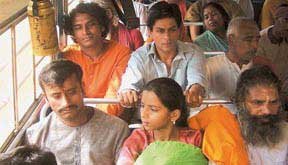

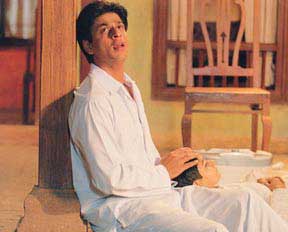
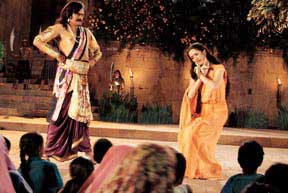

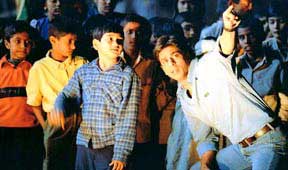
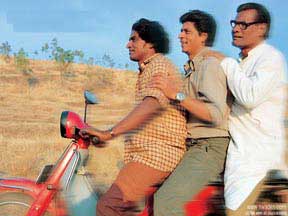
You must be logged in to post a comment Login